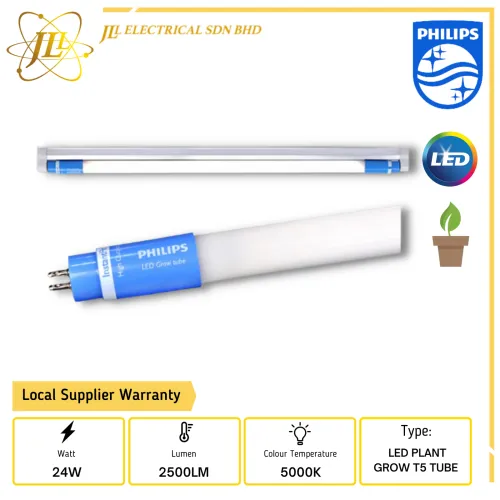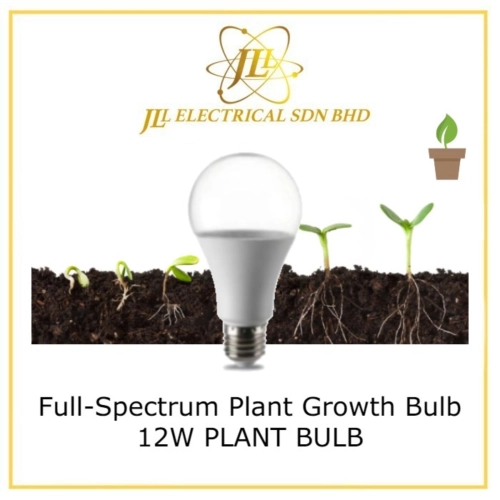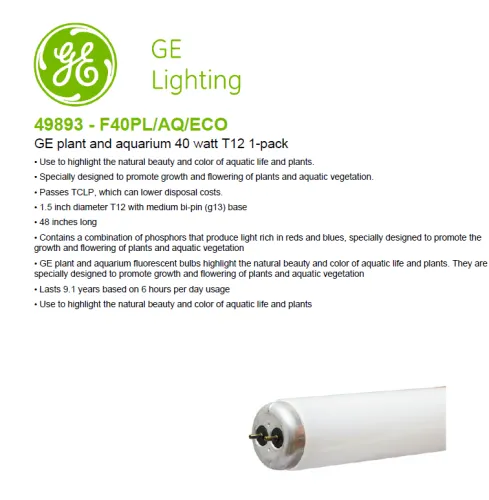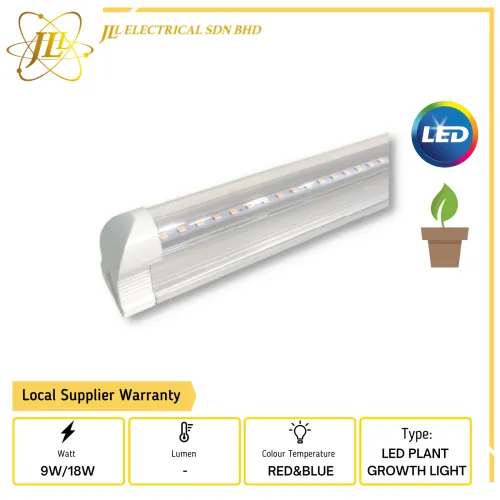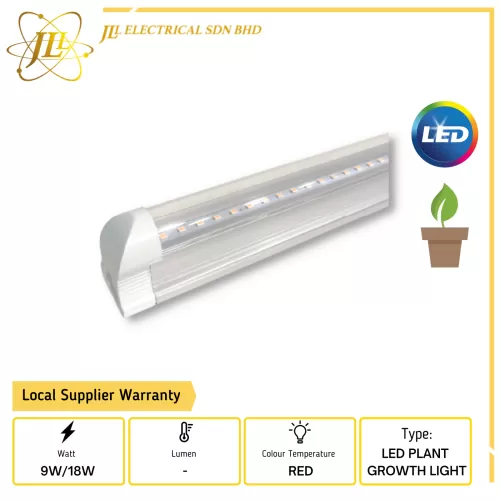PLANT GROWING LED 2 or 4 FEET T8 TUBE (RED & BLUE) C/W ACCESSORIES. PLUG AND PLAY FOR INDOOR USE ONLY. BEAN TO ROOT GROWTH
RM80.00 - RM100.00
Brand: OTHERS
Category: PLANT GROWTH LIGHTINGS
Quantity: 24
PLANT GROWING LED 2 or 4 FEET T8 TUBE (RED & BLUE) C/W ACCESSORIES. PLUG AND PLAY FOR INDOOR USE ONLY. BEAN TO ROOT GROWTH
-Can be extended to 16feet by plug & play.
Specification:
Input Voltage (V) 220v/50Hz
Lamp Power (W) 9W / 18W
Enviroment use (C) -20 C ~ 45 C
Size (MM) @29* 600
IIumination (Lx) According to the degree distribution
Bean angle (degrees) 120.
18w 4feet Characteristic hypothesis

SEARCH PLANT IN SEARCH BAR FOR MORE PLANT RELATED PRODUCTS.
Grow light or plant light is an artificial light source, generally an electric light, designed to stimulate plant growth by emitting an electromagnetic spectrumappropriate for photosynthesis. Grow lights are used in applications where there is either no naturally occurring light, or where supplemental light is required. For example, in the winter months when the available hours of daylight may be insufficient for the desired plant growth, lights are used to extend the time the plants receive light. If plants do not receive enough light, they will grow long and spindly.
Grow lights either attempt to provide a light spectrum similar to that of the sun, or to provide a spectrum that is more tailored to the needs of the plants being cultivated. Outdoor conditions are mimicked with varying colour, temperatures and spectral outputs from the grow light, as well as varying the lumen output (intensity) of the lamps. Depending on the type of plant being cultivated, the stage of cultivation (e.g. the germination/vegetative phase or the flowering/fruiting phase), and the photoperiod required by the plants, specific ranges of spectrum, luminous efficacy and colour temperature are desirable for use with specific plants and time periods.
LEDs (Light Emitting Diodes)
Two plants growing under an LED grow light
LED grow lights are composed of light-emitting diodes, usually in a casing with a heat sink and built-in fans. LED grow lights do not usually require a separate ballast and can be plugged directly into a standard electrical socket.
LED grow lights vary in color depending on the intended use. It is known from the study of photomorphogenesis that green, red, far-red and blue light spectra have an effect on root formation, plant growth, and flowering, but there are not enough scientific studies or field-tested trials using LED grow lights to recommended specific color ratios for optimal plant growth under LED grow lights. It has been shown that many plants will grow normally if given both red and blue light. However, many studies indicate that red and blue light only provides the most cost efficient method of growth, plant growth is still better under light supplemented with green.
White LED grow lights provide a full spectrum of light designed to mimic natural light, providing plants a balanced spectrum of red, blue and green. The spectrum used varies, however, white LED grow lights are designed to emit similar amounts of red and blue light with the added green light to appear white. White LED grow lights are often used for supplemental lighting in home and office spaces.
A large number of plant species have been assessed in greenhouse trials to make sure plants have higher quality in biomass and biochemical ingredients even higher or comparable with field conditions. Plant performance of mint, basil, lentil, lettuce, cabbage, parsley, carrot were measured by assessing health and vigor of plants and success in promoting growth. Promoting in profuse flowering of select ornamentals including primula, marigold, stock were also noticed.
In tests conducted by Philips Lighting on LED grow lights to find an optimal light recipe for growing various vegetables in greenhouses, they found that the following aspects of light affects both plant growth (photosynthesis) and plant development (morphology): light intensity, total light over time, light at which moment of the day, light/dark period per day, light quality (spectrum), light direction and light distribution over the plants. However it's noted that in tests between tomatoes, mini cucumbers and bell peppers, the optimal light recipe was not the same for all plants, and varied depending on both the crop and the region, so currently they must optimize LED lighting in greenhouses based on trial and error. They've shown that LED light affects disease resistance, taste and nutritional levels, but as of 2014 they haven't found a practical way to use that information.
A small ficus plant being grown under a black LED light fixture emitting warm white light.
Ficus plant grown under a white LED grow light.
The diodes used in initial LED grow light designs were usually 1/3 watt to 1 watt in power. However, higher wattage diodes such as 3 watt and 5 watt diodes are now commonly used in LED grow lights. for highly compacted areas, COB chips between 10 watts and 100 watts can be used. Because of heat dissipation, these chips are often less efficient.
LED grow lights should be kept at least 12 inches (30 cm) away from plants to prevent leaf burn.
LED grow lights are priced much higher, watt-for-watt, than other grow lights but are designed to be energy efficient and long lasting. LED's usually last for 50,000 - 90,000 hours until LM-70 is reached.
Color spectrum
The color temperatures of different grow lights
Different grow lights produce different spectrums of light. Plant growth patterns can respond to the color spectrum of light, a process completely separate from photosynthesis known as photomorphogenesis.
Natural daylight has a high color temperature (approximately 5000-5800 K). Visible light color varies according to the weather and the angle of the Sun, and specific quantities of light (measured in lumens) stimulate photosynthesis. Distance from the sun has little effect on seasonal changes in the quality and quantity of light and the resulting plant behavior during those seasons. The axis of the Earth is not perpendicular to the plane of its orbit around the sun. During half of the year the north pole is tilted towards sun so the northern hemisphere gets nearly direct sunlight and the southern hemisphere gets oblique sunlight that must travel through more atmosphere before it reaches the Earth's surface. In the other half of the year, this is reversed. The color spectrum of light that the sun emits does not change, only the quantity (more during the summer and less in winter) and quality of overall light reaching the Earth's surface. Some supplemental LED grow lights in vertical greenhouses produce a combination of only red and blue wavelengths. The color rendering index allows comparison of how closely the light matches the natural color of regular sunlight.
The ability of a plant to absorb light varies with species and environment, however, the general measurement for the light quality as it affects plants is the PAR value, or Photosynthetically Active Radiation.
There have been several experiments using LEDs to grow plants, and it has been shown that plants need both red and blue light for healthy growth. From experiments it has been consistently found that plants grown under only red (660 nm) LEDs grow poorly with leaf deformities, though adding a small amount of blue allows most plants to grow normally.
Several reports suggest that a minimum blue light requirement of 15-30 μmol·m−2·s−1 is necessary for normal development in several plant species.
LED panel light source used in an experiment on potato plant growth by NASA.
Many studies indicate that even with blue light added to red LEDs, plant growth is still better under white light, or light supplemented with green. Neil C Yorio demonstrated that by adding 10% blue light (400 to 500 nm) to the red light (660 nm) in LEDs, certain plants like lettuce and wheat grow normally, producing the same dry weight as control plants grown under full spectrum light. However, other plants like radish and spinach grow poorly, and although they did better under 10% blue light than red-only light, they still produced significantly lower dry weights compared to control plants under a full spectrum light. Yorio speculates there may be additional spectra of light that some plants need for optimal growth.
Greg D. Goins examined the growth and seed yield of Arabidopsis plants grown from seed to seed under red LED lights with 0%, 1%, or 10% blue spectrum light. Arabidopsis plants grown under only red LEDS alone produced seeds, but had unhealthy leaves, and plants took twice as long to start flowering compared to the other plants in the experiment that had access to blue light. Plants grown with 10% blue light produced half the seeds of those grown under full spectrum, and those with 0% or 1% blue light produced one-tenth the seeds of the full spectrum plants. The seeds all germinated at a high rate under all light types tested.
Hyeon-Hye Kim demonstrated that the addition of 24% green light (500-600 nm) to red and blue LEDs enhanced the growth of lettuce plants. These RGB treated plants not only produced higher dry and wet weight and greater leaf area than plants grown under just red and blue LEDs, they also produced more than control plants grown under cool white fluorescent lamps, which are the typical standard for full spectrum light in plant research. She reported that the addition of green light also makes it easier to see if the plant is healthy since leaves appear green and normal. However, giving nearly all green light (86%) to lettuce produced lower yields than all the other groups.
The National Aeronautics and Space Administration’s (NASA) Biological Sciences research group has concluded that light sources consisting of more than 50% green cause reductions in plant growth, whereas combinations including up to 24% green enhance growth for some species. Green light has been shown to affect plant processes via both cryptochrome-dependent and cryptochrome-independent means. Generally, the effects of green light are the opposite of those directed by red and blue wavebands, and it's speculated that green light works in orchestration with red and blue.
Light requirements of plants.
A plant's specific needs determine which lighting is most appropriate for optimum growth; artificial light must mimic the natural light to which the plant is best adapted. If a plant does not get enough light, it will not grow, regardless of other conditions. For example, vegetables grow best in full sunlight, and to flourish indoors they need equally high light levels, whereas foliage plants (e.g. Philodendron) grow in full shade and can grow normally with much lower light levels.
Grow lights usage is dependent on the plant's phase of growth. Generally speaking, during the seedling/clone phase, plants should receive 16+ hours on, 8- hours off. The vegetative phase typically requires 18 hours on, and 6 hours off. During the final, flower stage of growth, keeping grow lights on for 12 hours on and 12 hours off is recommended.[citation needed]
Photoperiodism.
In addition, many plants also require both dark and light periods, an effect known as photoperiodism, to trigger flowering. Therefore, lights may be turned on or off at set times. The optimum photo/dark period ratio depends on the species and variety of plant, as some prefer long days and short nights and others prefer the opposite or intermediate 'day lengths'.
Much emphasis is placed on photoperiod when discussing plant development. However, it is the number of hours of darkness that affects a plant’s response to day length. In general, a “short-day” is one in which the photoperiod is no more than 12 hours. A “long-day” is one in which the photoperiod is no less than 14 hours. Short-day plants are those that flower when the day length is less than a critical duration. Long-day plants are those that only flower when the photoperiod is greater than a critical duration. Day-neutral plants are those that flower regardless of photoperiod.
Plants that flower in response to photoperiod may have a facultative or obligate response. A facultative response means that a plant will eventually flower regardless of photoperiod, but will flower faster if grown under a particular photoperiod. An obligate response means that the plant will only flower if grown under a certain photoperiod.
Photosynthetically Active Radiation (PAR)
Lux and lumens are commonly used to measure light levels, but they are photometric units which measure the intensity of light as perceived by the human eye.
The spectral levels of light that can be used by plants for photosynthesis is similar to, but not the same as what's measured by lumens. Therefore, when it comes to measuring the amount of light available to plants for photosynthesis, biologists often measure the amount of photosynthetically active radiation (PAR) received by a plant. PAR designates the spectral range of solar radiation from 400 to 700 nanometers, which generally corresponds to the spectral range that photosynthetic organisms are able to use in the process of photosynthesis.
The irradiance of PAR can be expressed in units of energy flux (W/m2), which is relevant in energy-balance considerations for photosynthetic organisms. However, photosynthesis is a quantum process and the chemical reactions of photosynthesis are more dependent on the number of photons than the amount of energy contained in the photons. Therefore, plant biologists often quantify PAR using the number of photons in the 400-700 nm range received by a surface for a specified amount of time, or the Photosynthetic Photon Flux Density (PPFD). This is normally measured using mol m−2s−1.
According to one manufacturer of grow lights, plants require at least light levels between 100 and 800 μmol m−2s−1. For daylight-spectrum (5800 K) lamps, this would be equivalent to 5800 to 46,000 lm/m2.Grow light or plant light is an artificial light source, generally an electric light, designed to stimulate plant growth by emitting an electromagnetic spectrumappropriate for photosynthesis. Grow lights are used in applications where there is either no naturally occurring light, or where supplemental light is required. For example, in the winter months when the available hours of daylight may be insufficient for the desired plant growth, lights are used to extend the time the plants receive light. If plants do not receive enough light, they will grow long and spindly.
Grow lights either attempt to provide a light spectrum similar to that of the sun, or to provide a spectrum that is more tailored to the needs of the plants being cultivated. Outdoor conditions are mimicked with varying colour, temperatures and spectral outputs from the grow light, as well as varying the lumen output (intensity) of the lamps. Depending on the type of plant being cultivated, the stage of cultivation (e.g. the germination/vegetative phase or the flowering/fruiting phase), and the photoperiod required by the plants, specific ranges of spectrum, luminous efficacy and colour temperature are desirable for use with specific plants and time periods.
Inquiry - PLANT GROWING LED 2 or 4 FEET T8 TUBE (RED & BLUE) C/W ACCESSORIES. PLUG AND PLAY FOR INDOOR USE ONLY. BEAN TO ROOT GROWTH





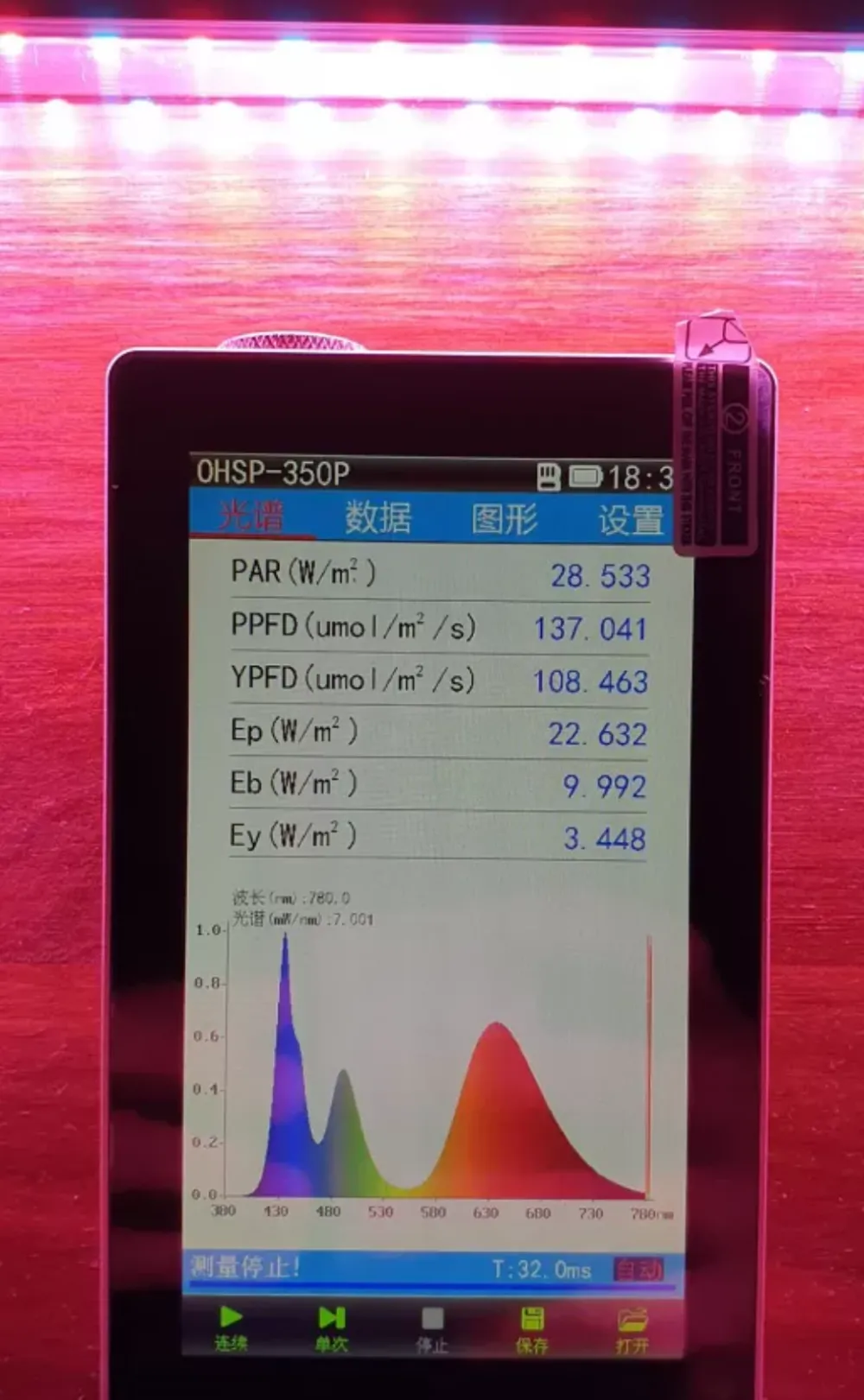
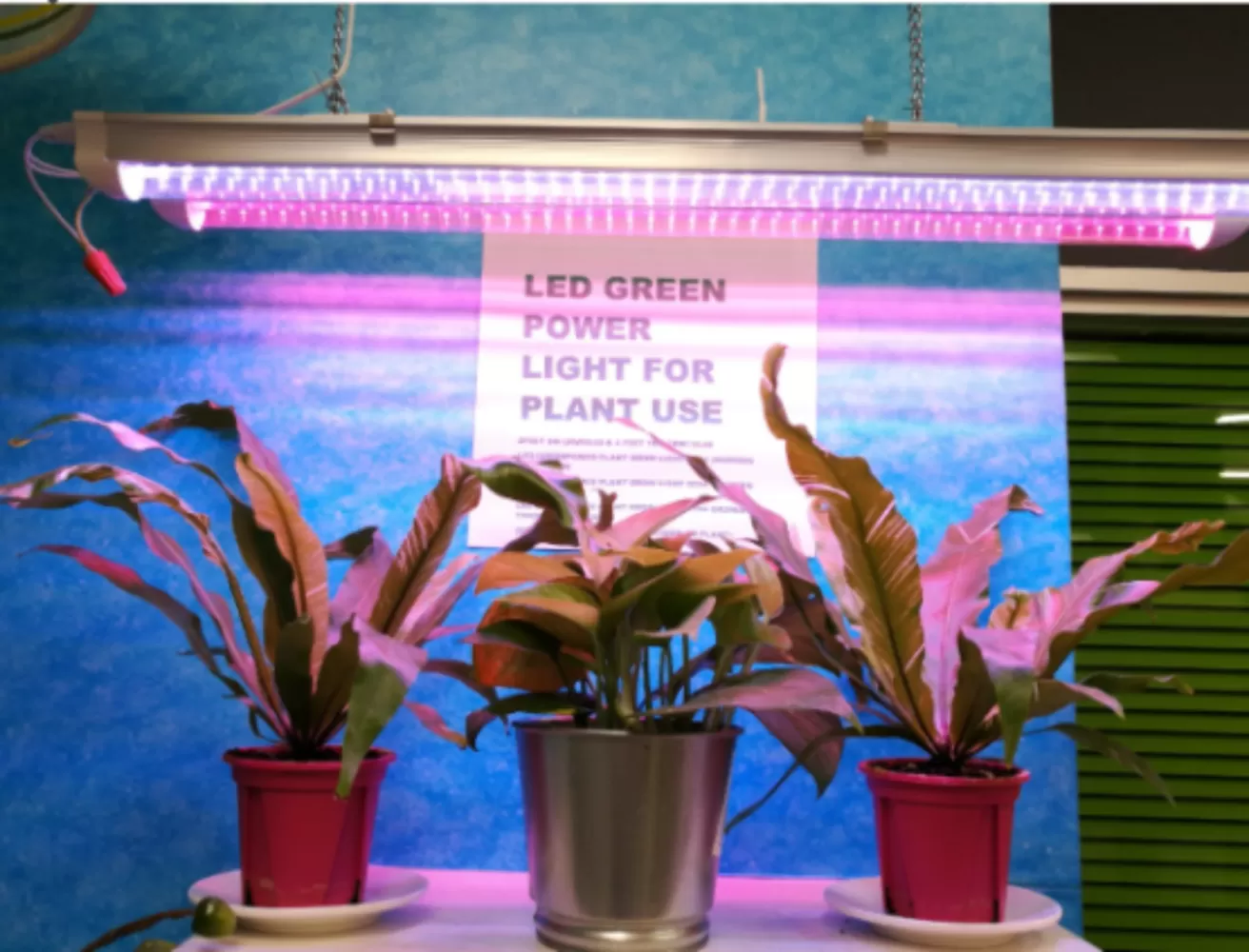
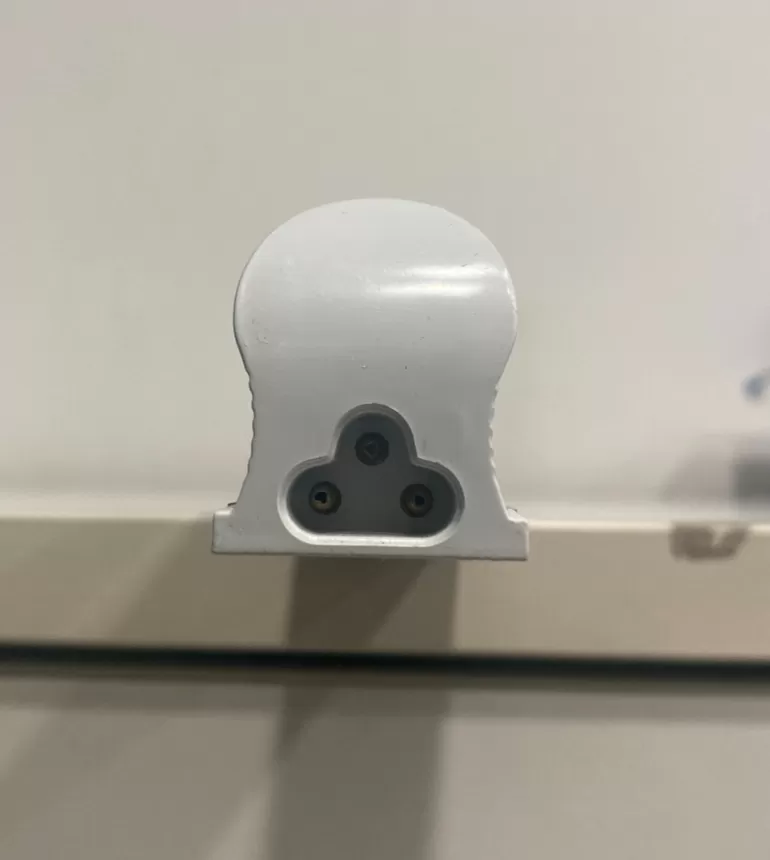






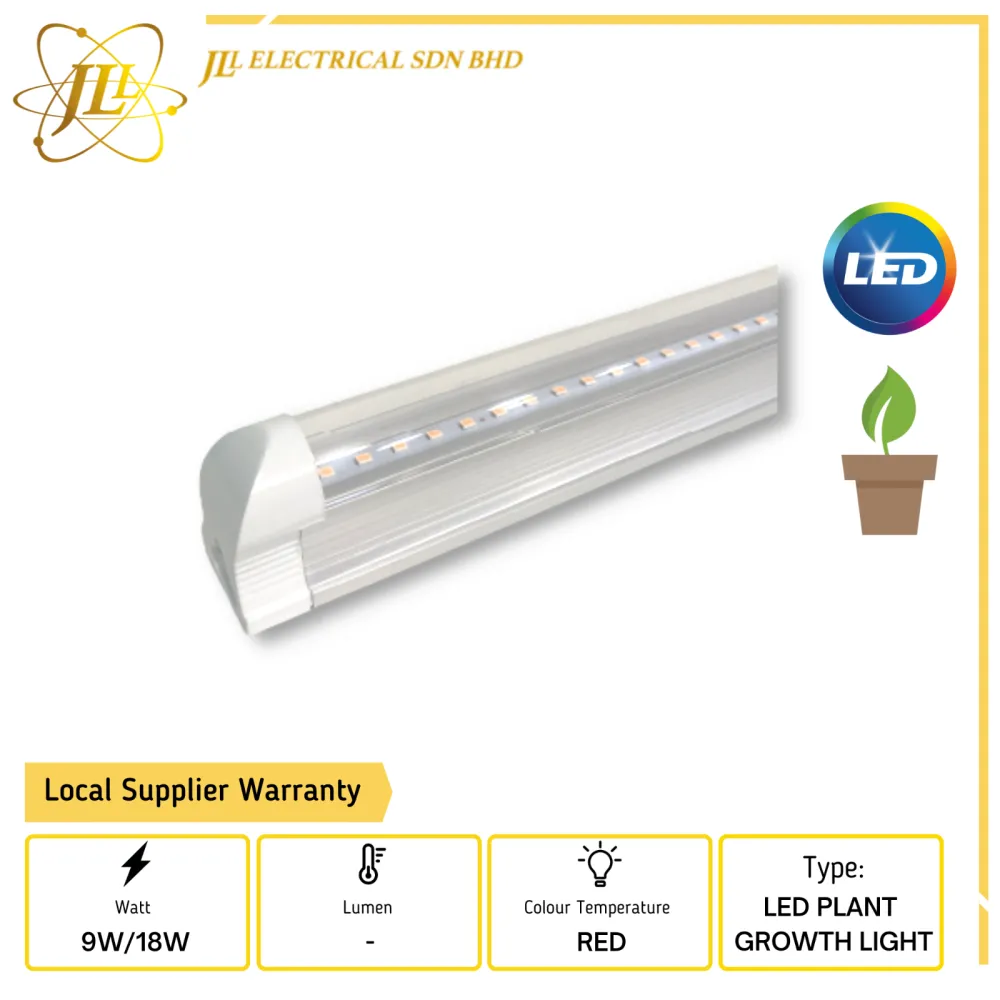
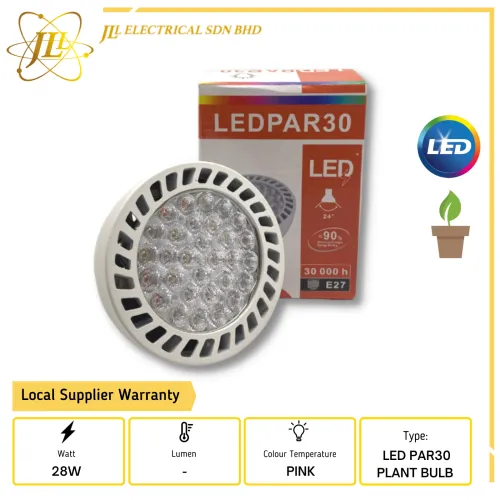

![FSL LED PLANT GROWTH LIGHT 220-240V 4FEET [12W/16W] [PINK/WHITE/RED/PURPLE]](https://cdn1.npcdn.net/images/1676521877dd82fed23436f80e12f70f67035c5392.webp?md5id=d0866fb7fef7340334755089f89bdfeb&new_width=500&new_height=500&w=1708056978&from=png)
